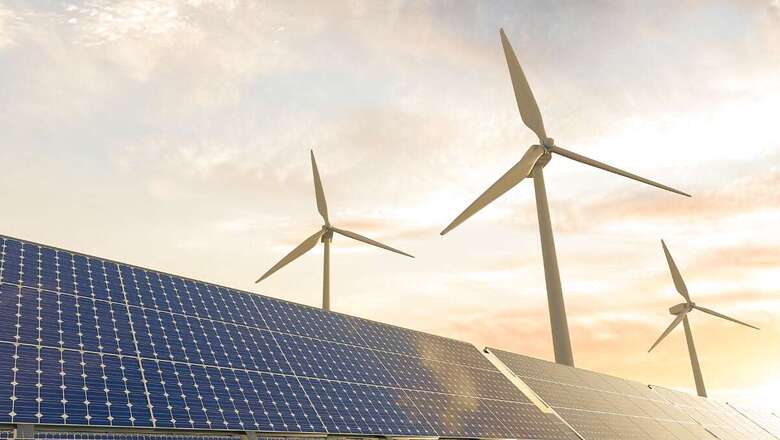
views
In its first-ever official progress report of the landmark goal agreed at COP28 Dubai, the International Renewable Energy Agency (IRENA) said countries are not on track to triple renewable energy capacities by 2030. Except for the growth in Solar PV capacity, the additions for all other RE (Renewable Energy) technologies are far lower than what is required to meet the target.
The report comes just a month before the year’s biggest annual climate summit — United Nations Conference of Parties (COP29) — opens in Baku, Azerbaijan on November 11.
Nearly 473 GW of new RE capacity was added in 2023. Despite the phenomenal deployment, crucial gaps remain. The world can reach only half of the required growth in renewable power by 2030, showed the detailed assessment of the current national plans and targets. According to the latest projections, they will leave a global collective gap of 3.8 TW by 2030 — falling short of the goal by 34 per cent.
To meet the goal set at Dubai, the installed capacity would have to grow from 3.9 terawatt (TW) to 11.2 TW by 2030 — a need for an additional 7.3 TW in less than six years, according to the report commissioned by COP28 Presidency.
INVESTMENT IN RE REACHES RECORD HIGH
The findings also showed the investments in renewable capacity reached a record high of $570 billion in 2023, but they are still short of the $1.5 trillion needed each year between 2024 and 2030. More so, 84 per cent of RE capacity investment was in China, the EU and the US, while Brazil and India accounted for just over 6 per cent in 2023.
The global agency also flagged the major “financing gaps” faced by the emerging and developing economies that continue to undermine their access to energy transition technologies.
The findings also come at a crucial time when the countries are preparing to submit their updated Nationally Determined Contributions (NDCs) by 2025. Only three countries have so far revised their climate targets since COP28 and only one had enhanced ambitions for renewable energy. “The next NDCs must mark a turning point and bring the world back on track,” said Francesco La Camera, Director-General, IRENA.
With the annual climate summit just a month away, COP29 President-Designate HE Mukhtar Babayev also called upon all governments, businesses and civil society “to intensify their efforts and deliver progress in support of these critical goals”.
AGREEMENT ON ‘NEW CLIMATE FINANCE GOAL’ CRUCIAL
The report highlighted that the setting up of the New Collective Quantified Goal (NCQG) at the upcoming summit is vital to the progress on climate action. The countries will try to finalise the total amount, structure for the new climate finance goal and who all will contribute to it and to what extent.
NCQG is a new financial target under the Paris Agreement to help developing countries do climate action as well as to inspire ambitious targets in the NDC 3.0 submission process next year. “Financing must be made available at better terms, especially for emerging markets and developing economies (EMDEs), by mitigating country and currency exchange risks and delivering broader availability of concessional finance and grants,” the report noted.
Speaking at the report launch during pre-COP, energy minister Azerbaijan, HE Parviz Shahbazov Ogtay, said COP29 will build on the COP29 agreement. “This requires countries to enhance their ambitions, update their NDCs, and increase investments,” he added.




















Comments
0 comment